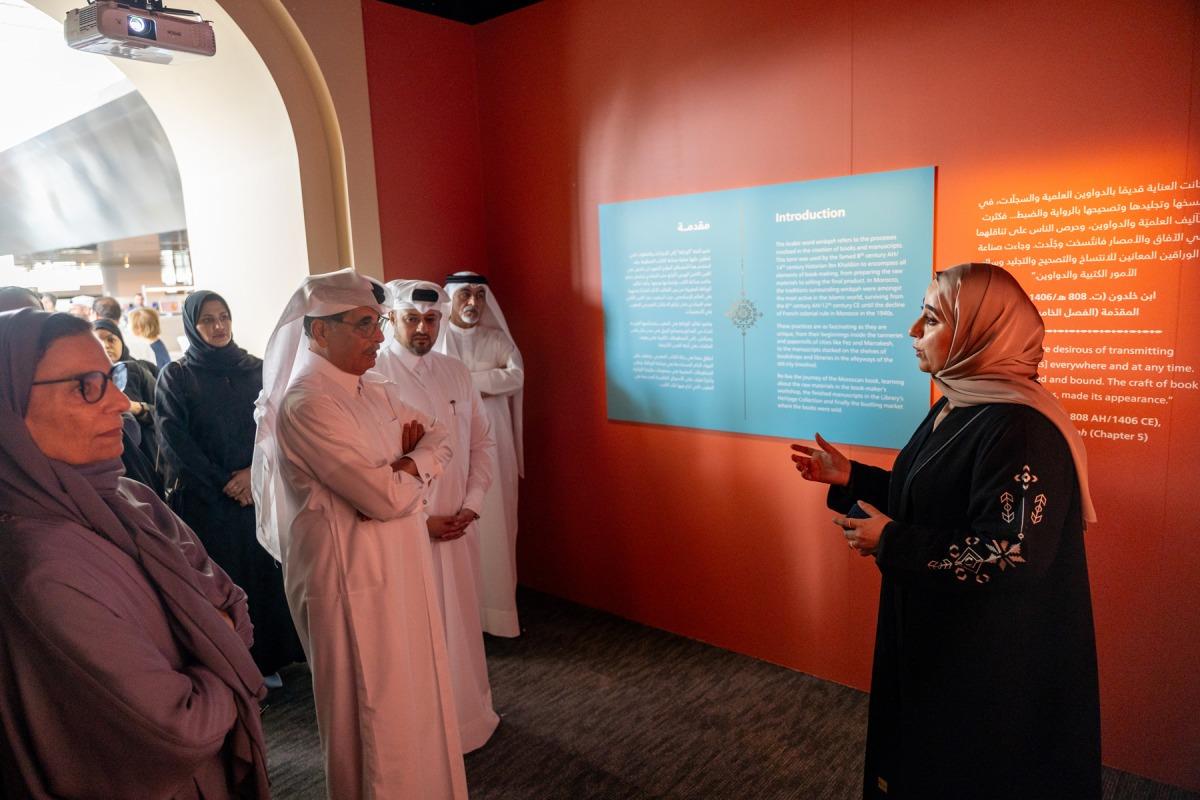
QNL Exhibition Shows Morocco's Rich Book-Making History
DOHA: As part of the Qatar-Morocco 2024 Year of Culture, Qatar National Library (QNL) is celebrating the centuries-old Maghribi tradition of creating books and manuscripts. Titled 'From Material to Market: The Art of Book-Making in Morocco,' the exhibition provides insights into Morocco's rich multi-faceted history of book production – from the intricate process of sourcing materials like leather and ink to the artful calligraphy and binding techniques.
Whether an art or history enthusiast, the exhibition offers a fascinating journey through time into Morocco's significant contribution to the Islamic world's intellectual and cultural heritage.
The exhibition's design was inspired by the Ben Youssef Madrasa in Marrakech, a historic school from the 12th century and the first of its kind to be dedicated to arts like book illumination and scribing.
Following time-honoured traditions, manuscript illuminators sourced their colours from the natural world. Henna (producing shades of brown, often used for binding), indigo (a deep blue), saffron (a golden yellow), and gallnuts (a growth found on trees, yielding both blue and black pigments) were among the favoured plant-based dyes. Gum arabic was added to enhance the flow and viscosity of the ink.
Moroccan scribes would infuse their inks with an array of aromatic ingredients-such as musk, sandalwood, orange blossom, amber, and rose water-using carefully documented recipes that elevated writing and copying into a uniquely sensory and artistic experience.
Bookbinders in Morocco would sometimes cut the leather cover from an old manuscript and attach it to a new one, marking one of the oldest traditions of reusing material in book production.
The exhibition's feature video on tannery workers was filmed at the Chouara tannery in Fez – one of Morocco's oldest and largest tanneries, where leather for manuscripts was traditionally treated.
Booksellers in Morocco earned high respect for strictly adhering to ethical principles, such as fairly valuing paper produced during the demanding summer months-and thus pricing it higher-while also using high-quality ink.
The exhibition's souq-themed audio was recorded in the bustling markets of Fez and Rabat, giving visitors a true sense of Morocco's vibrant marketplace culture.
The city of Fez hosted more than 400 active papermakers in the 1200s CE and boasted 30 bookshops by the 1500s CE. Bookmakers in Fez formed guilds and followed market laws codified in manuals, underlining the city's significance as a cultural and intellectual hub.

Legal Disclaimer:
MENAFN provides the information “as is” without warranty of any kind. We do not accept any responsibility or liability for the accuracy, content, images, videos, licenses, completeness, legality, or reliability of the information contained in this article. If you have any complaints or copyright issues related to this article, kindly contact the provider above.






















Comments
No comment